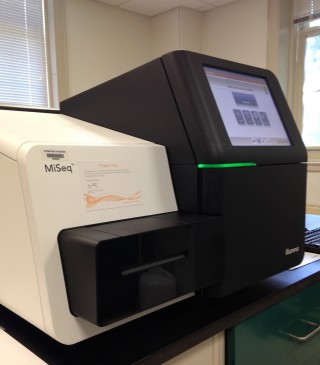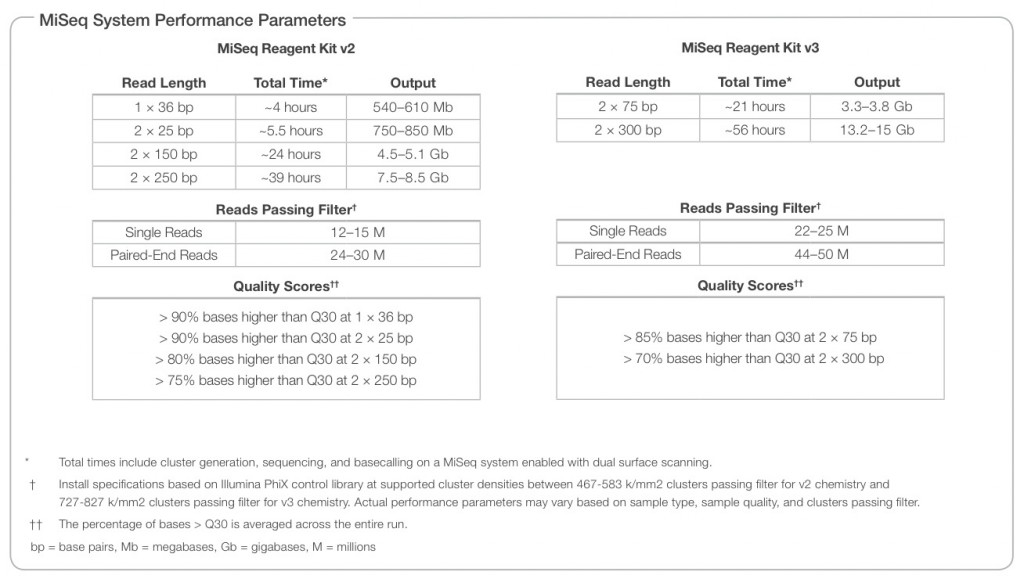Reversible Dye Termination Sequencing by Synthesis Technology
Illumina’s reversible dye termination sequencing by synthesis technology is the foundation for their five NextGen instruments: HiSeq 2500/2000, Genome Analyzer IIx, MiSeq, NextSeq 500 and the HiSeq X10. Currently, the MiSeq system has the longest read length of all five platforms on the market with a 2 x 300bp option.
The basic principle behind how Illumina sequencing works is fluorophore detection. First, libraries undergo bridge amplification to generate clonal clusters of library molecules directly on the surface of the sequencing flow cell. The nucleotides used during sequencing are labeled with a different fluorophore and are all chain terminating. However, their chain terminating properties are reversible. During sequencing, all nucleotides are pushed through the flow cell lanes and allowed to anneal to the library clusters, with only one nucleotide annealing at a time. After annealing, the excess nucleotides are washed away and the fluorophore emissions from each cluster are imaged. An enzymatic reaction will cleave off the fluorophore and the next round of nucleotide annealing will take place. Each nucleotide is coded by a different color emission and the resulting data is converted by the software into nucleotide sequence.
MiSeq Platform Specifications
The sequencing specifications of the MiSeq are shown in the table below. This table was taken directly from the Illumina Sequencing Specification sheet. The full document can be accessed here.
Illumina provides a Sequencing Coverage Calculator for the MiSeq. Download the file below (along with Illumina’s Technical Application Note) to help you with your experimental design.
Become a member of myIllumina to get access to assay design tools, product updates and more!
Illumina Sequencing Applications
There are several supported applications for Illumina DNA, RNA and epigenetics sequencing. Click the links below to get more information on their most popular applications.
- Whole Genome Sequencing
- Targeted Resequencing
- de novo sequencing
- RNA-Sequencing applications such as mRNA-Seq, Total RNA-Seq, small RNA-Seq and Ribosomal Profiling,
- ChIP-Seq
- Methyl-Seq

